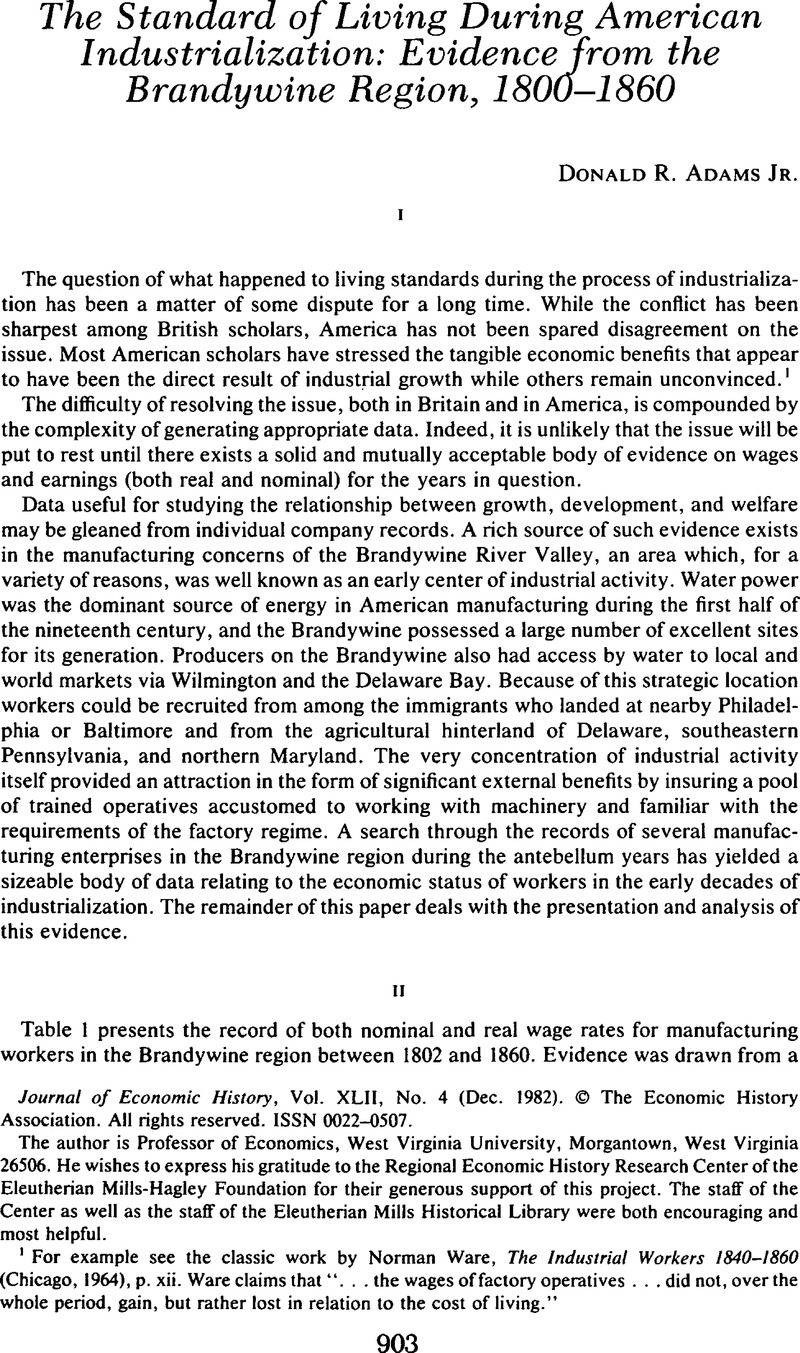Published online by Cambridge University Press: 03 March 2009

1 For example see the classic work by Ware, Norman, The Industrial Workers 1840–1860 (Chicago, 1964), p. xii. Ware claims that “… the wages of factory operatives … did not, over the whole period, gain, but rather lost in relation to the cost of living.”Google Scholar
2 David, Paul and Solar, Peter, “A Bicentenary Contribution to the History of the Cost of Living in America”, Research in Economic History, (Uselding, Paul, ed.) 2 (1977), p. 16Google Scholar
3 Lebergott, Stanley, Manpower in Economic Growth (New York, 1964), p. 510.Google Scholar
4 For example see Williamson, Jeffrey S., “Urban Disamenities, Dark Satanic Mills and the British Standard of Living Debate,” this JOURNAL, 41 (03 1981), 75–83;Google ScholarPollard, Sidney, “Sheffield and Sweet Auburn—Amenities and Living Standerds in the British Industrial Revolution: A Comment,”, this JOURNAL, 41 (12 1981), 902–04;Google Scholar and Williamson, Jeffrey S., “Some Myths Die Hard—Urban Disamenities One More Time: A Reply,” this JOURNAL, 41 (12 1981), 905–07.Google Scholar
5 Lebergott, pp. 510–511.Google Scholar
6 Niemi, Albert W. Jr, “A Further Look at Interregional Canals and Economic Specialization: 1820–1840”, Explorations in Economic History, 7 (Summer 1970), 502.Google Scholar
7 The following excerpts from 1830 indicate the range of variations. “… $6 per month and washing and mending his linen clothing also to make him 2 pair trousers he finding the linen ….”; “$7 per month … he finds his own washing and mending. I am also to furnish him with a house garden … but no fire wood”; “… $6.50 per month for the season he to furnish his own washing and mending. I am to allow him two days at Harvest (sic)”. From the Records of Richard Mansfield, Farmer 1825–1844, New Castle County (53), Delaware Hall of Records, Dover, Delaware.Google Scholar
8 Thus, between 1800 and 1860 over one-half of the increase in total remuneration was the result of an increase in the value of non-monetary payments.Google Scholar
9 Lebergott, p. 520.Google Scholar
10 Ibid., p. 519.
11 Documents Relative to the Manufactures of the United States, Executive Document, 22nd Congress, 1 st Session, Document No. 308.
12 United States Bureau of the Census, Historical Statistics of the United States, Colonial Times to 1957 (1960), pp. 180–81.Google Scholar
13 Samuelson, Paul A., Economics, 10th ed. (New York, 1976), p. 210.Google Scholar
14 Employee accounts were credited with 6 percent interest on December 31 based on accumulated savings at the beginning of the year (January 1). Interest was Paid on $50 increments only. For example, an employee whose savings with the firm totaled $257 on January 1, 1830 would be credited with $15 interest (6 percent of $250) on December 31, 1830.Google Scholar
A more thorough discussion of workers' savings is contained in Adams, Donald R. Jr, “Earnings and Savings in the Early 19th Century”, Explorations in Economic History, 17 (1980), 118–34.CrossRefGoogle Scholar